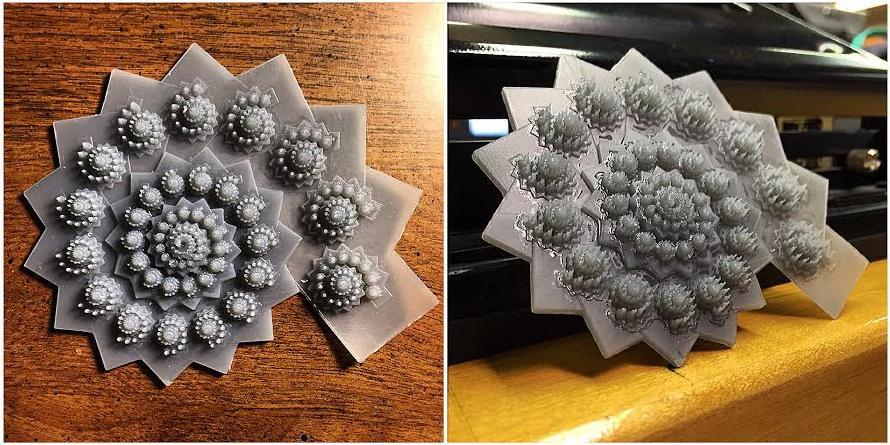Over the course of the past year we have seen many 3D printer manufacturers pushing hard to integrate 3D printing into a classroom environment. There are those unfamiliar with the technology who don’t see the benefits in allotting educational budgets specifically geared toward 3D printing. It won’t be until most of these people are convinced of the benefits that we will really see 3D printing take off in schools.
For one freshman at Centre College in Danville, Kentucky, 3D printing was a way in which she could visualize her mathematical equations in a completely new realm. Molly Holder, a student from Louisville, is planning to major in Mathematics; thus when she was presented with an opportunity to take a class entitled “Chaos and Fractals,” she jumped at the opportunity.
“This class caught my attention because I knew the topic was math/science related,” Holder tells 3DPrint.com. “As I am planning on majoring in Mathematics and completing all of the necessary pre-med credits, I thought I would enjoy the class. I was correct!”
When most people think of chaos and fractals, mathematics is the first thing that pops into their heads. However, as Holder explained to us, fractals actually apply to many aspects of our lives, other than just math. These aspects include weather, architecture, biology, music, design, and just about everything found in nature.
While learning about fractals was of much interest to Holder, even more interesting is how the second half of this class was spent each day. Students were moved to a computer lab where they learned to code and plot Mandelbrot sets, Julia sets, basins of attraction, and fractals.
“My favorite of the things I have done so far is to design and code my own fractal,” Holder tells us. “I first figured the transformations needed to create the spiral. I used two transformations for my fractal.”
For those familiar with mathematics and fractals, you can see the transformation data of the fractal which Holder created, below.
It is based on a 2-dimensional iterated affine functional system, with the algorithm starting with a box shape and then iteratively being transformed by shrinking, rotating, and translating copies of the boxes, making them taller in the third dimension.
“The transformations were applied in Matlab, which outputs the .stl file for the print,” explained Holder. “Then with help from my professor, Dr. James Kelly, my fractal was printed on a Formlabs Form 1+“
What do you think about these incredible 3D printed fractals? Discuss in the 3D printed fractals forum thread on 3DPB.com.
